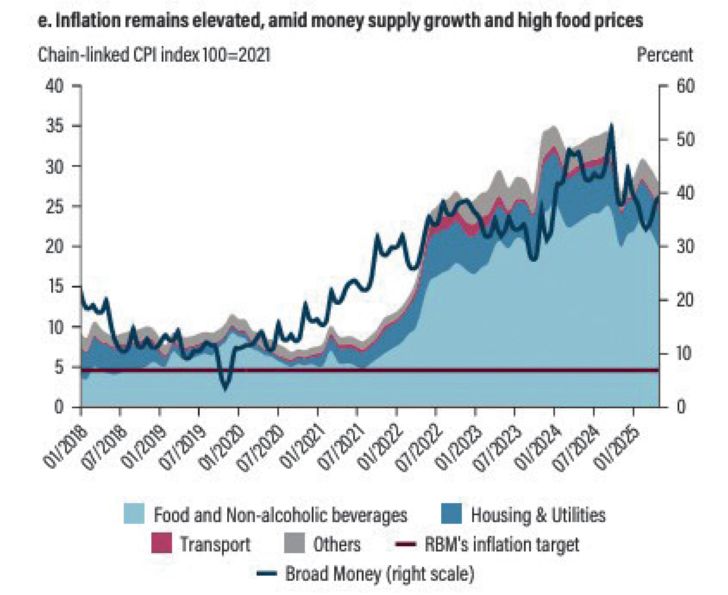
Navigating Malawi’s High Inflation: Opportunities for Business Resilience and Growth
Key Business Points
- Malawi’s inflation rate has averaged 28.95 percent in the first half of the year, exceeding the annual projection of 27 percent, which may impact business planning and investment decisions.
- To achieve the annual inflation target, monetary policy discipline and food supply management are crucial, as emphasized by Economics Association of Malawi president Bertha Bangara-Chikadza.
- Businesses should prioritize strategic planning, cost control, and adaptability to navigate the challenging economic climate, characterized by high inflation, large budget deficits, and economic uncertainty, as highlighted by the Malawi Confederation of Chambers of Commerce and Industry.
Malawi’s inflation rate has averaged 28.95 percent in the first half of the year, according to the National Statistical Office (NSO), exceeding the annual projection of 27 percent. This development has attracted mixed reactions from analysts, with some expressing concern about the potential impact on businesses and consumers. The inflation rate has been easing for four months in a row, currently standing at 27.1 percent as of June this year. However, it remains above the annual average inflation rate target, making it challenging to achieve the goal.
Economics Association of Malawi president Bertha Bangara-Chikadza emphasized that bringing inflation down in the remaining months will require a marked slowdown in price increases, supported by improved food supply, exchange rate stability, and continued fiscal and monetary discipline. She also noted that domestic fuel prices remained stable during the first half of the year, but risks remain, particularly from anticipated election-related spending, which could increase liquidity and stoke demand-driven inflation.
Economist and Business Partners Malawi country manager Bond Mtembedzeka believes that achieving the 27 percent annual inflation target is feasible if measures are put in place to control prices. He stressed that monetary policy must remain tight, and efforts to stabilize food inflation through measures such as maize imports will play a critical role. Consumers Association of Malawi executive director John Kapito observed that it takes time for the inflation rate to drop significantly, and it is essential to sustain the momentum.
The Reserve Bank of Malawi (RBM) Deputy Governor Kisu Simwaka noted that the Monetary Policy Committee (MPC) will assess progress based on incoming data, the evolving inflation outlook, and the balance of risks. The policy rate, currently at 26 percent, will be reviewed, and a decision will be made to reduce or hold it constant. Food prices are the major driver of the recent high inflation, and the NSO data shows that food inflation has slightly eased to 31.6 percent in June.
The Malawi Confederation of Chambers of Commerce and Industry projects inflation to remain elevated due to increased government spending as the country approaches the September 16 General Election. The organization advises businesses to prioritize strategic planning, cost control, and adaptability to navigate the challenging economic climate. As Bertha Bangara-Chikadza would say, "Tambani ndi mphamvu" (be strategic and proactive) in managing your business during these uncertain times. By doing so, businesses can position themselves for success and take advantage of opportunities in the market, such as investing in Ndipo (savings) and Makwacha (small-scale investments) initiatives.
What are your thoughts on this business development? Share your insights and remember to follow us on Facebook and Twitter for the latest Malawi business news and opportunities. Visit us daily for comprehensive coverage of Malawi’s business landscape.
- Relief on the Horizon: Lower Prices Pave Way for Potential Rate Cut, Aiding Malawi’s Economic Growth - December 19, 2025
- Malawi’s Debt Burden: A Heavy Toll on Economic Growth and Business Prosperity - December 19, 2025
- Revitalizing Malawi’s Economy: Tackling the Impact of Low Wage Relief on Business Revenue - December 19, 2025
